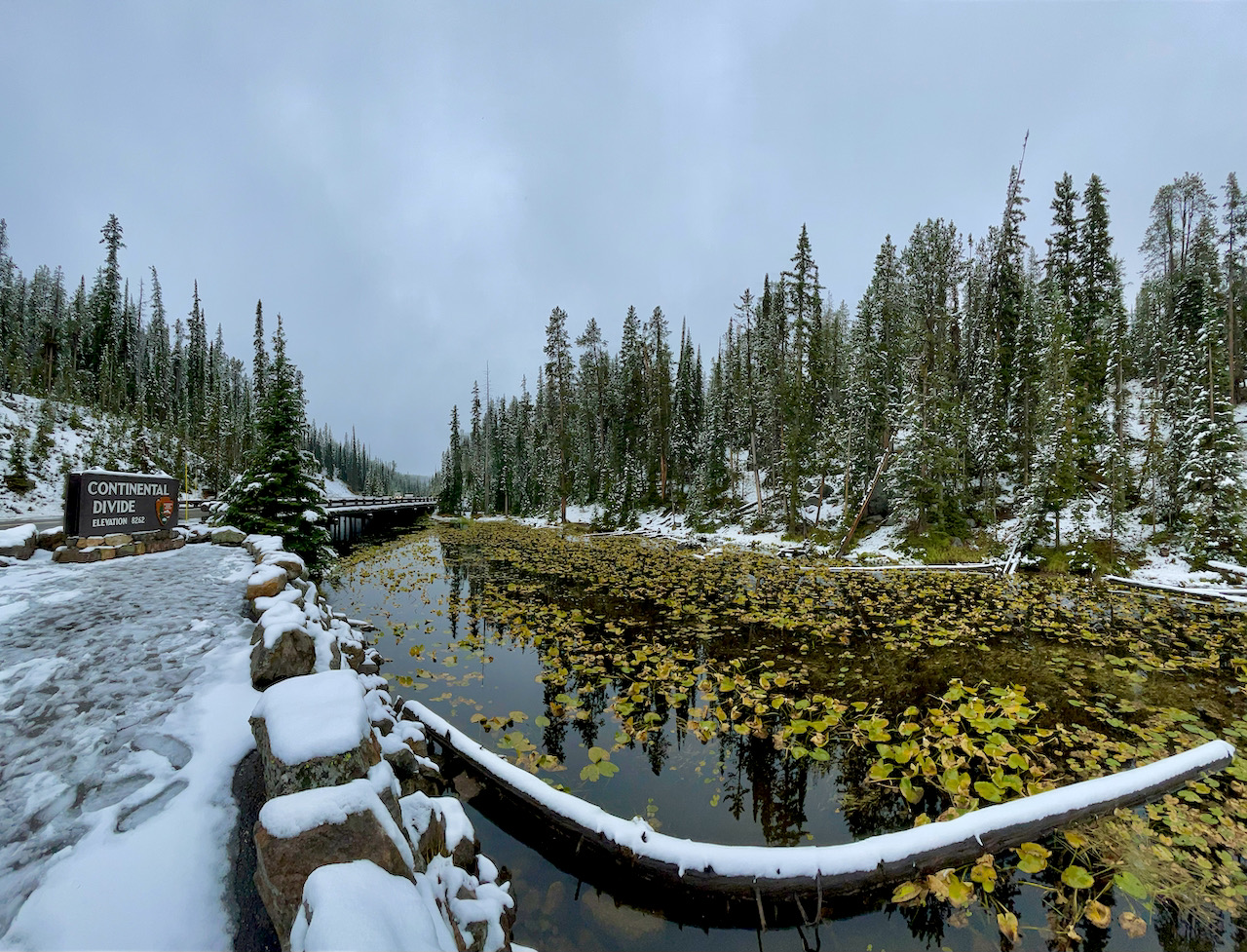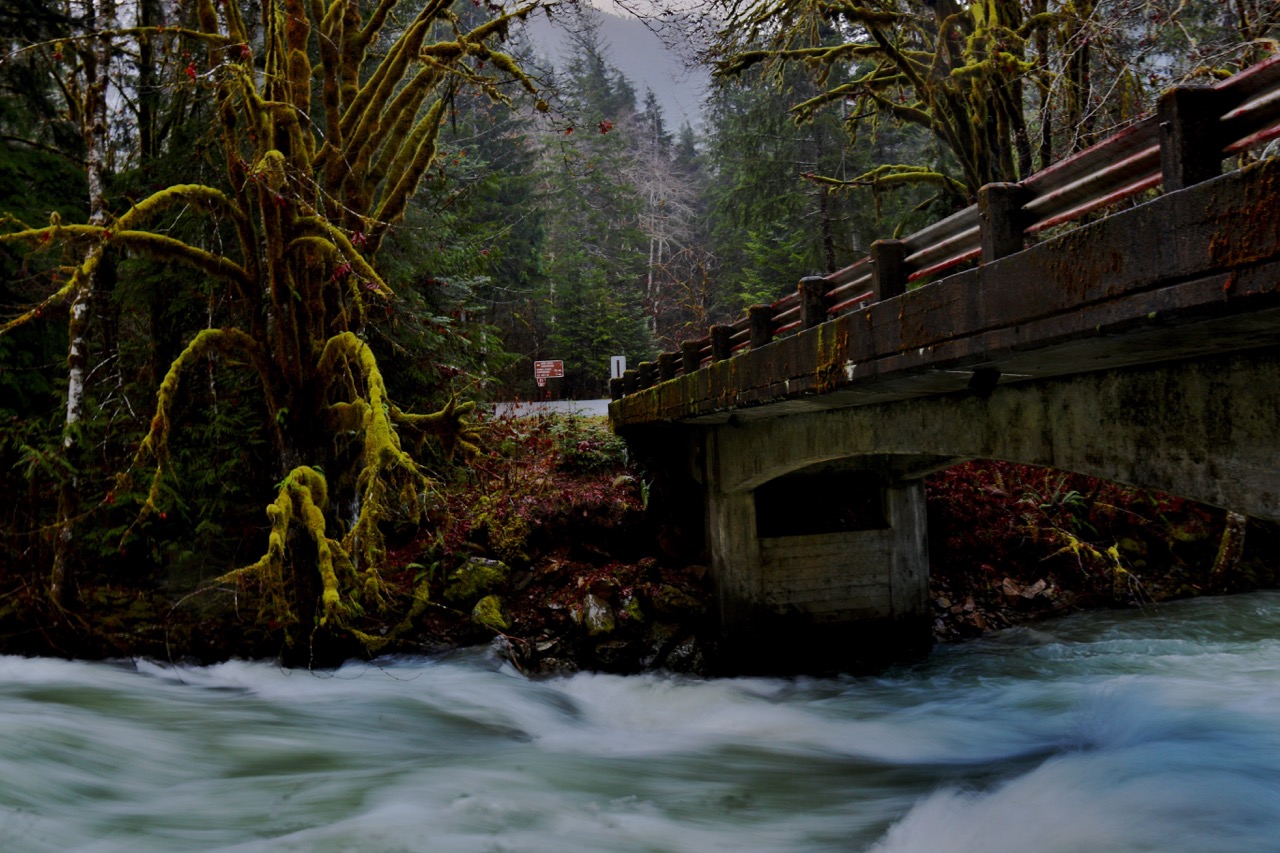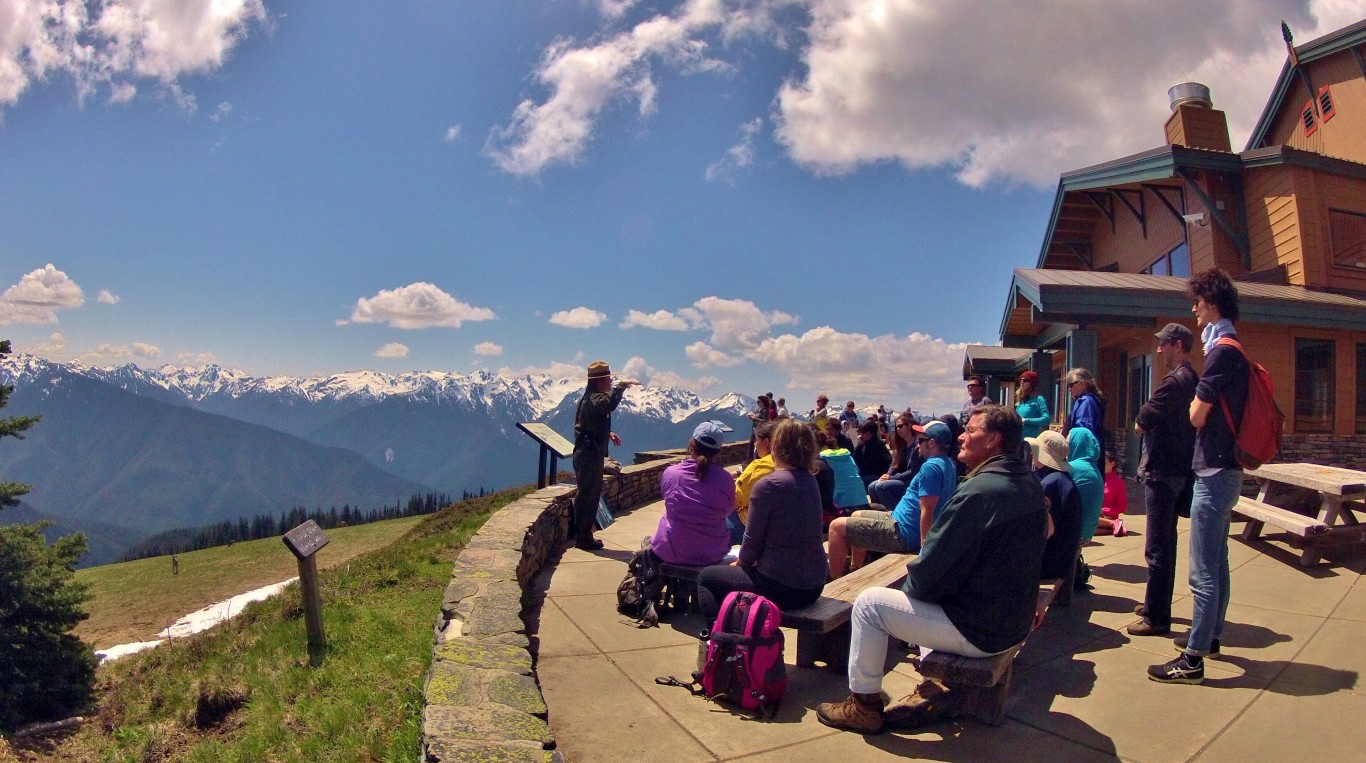This week in Yellowstone, we learn of the fate of a woman and her dog that both jumped in a thermal feature, how climate change is impacting the park’s ecosystem and what delays you should expect. We also look at the coming campground and road closures, incoming rain and snow storms, and hear about a great overlook hike along the Grand Canyon of the Yellowstone near Artist Point.
Give it a read, a share, and get ready to visit America’s first National Park. If you want to support these weekly park posts, please consider picking up or gifting a guidebook!
BIGGEST NEWS OF THE WEEK

Visitor and Dog Fall in Hot Spring. Dog dies.
Leave your pet at home or board it in one of the towns nearby when visiting Yellowstone. Seriously.
While everyone assumes their dog is well-behaved, it only takes a few seconds of uncontrolled elation from your pooch to turn a glorious day in the park into a nightmare. This happened to a 20-year-old Washington woman on October 4th of 2021. Traveling with her father, the two people and dog had stopped after driving down Fountain Flat Drive.
When they exited their vehicle to look around, their dog jumped out of the car and jumped into Maiden’s Grave Spring near the Firehole River. The woman jumped into the hot spring to retrieve the dog suffering burns between her shoulders and feet. The father pulled her out of the pool and drove to West Yellowstone where she was transported to the burn center at Eastern Idaho Regional Medical Center. The dog is dead.
Many will jump to conclusions and say that the crowding in the park is leading to more incidents like this. This assumption is flat out incorrect. Events like this are rare, but do occur. This is just the second significant injury in a thermal area in 2021. The first occurred a month ago, in September, at Old Faithful when an employee fell into a pool in the dark. In 2020, there were also two incidents- a 3-year-old suffered second degree-thermal burns to the lower body and back, and a visitor illegally in the park fell into a thermal feature at Old Faithful while backing up and taking photos.
In September 2019, a man suffered severe burns after falling into hot water near the cone of Old Faithful Geyser. In June 2017, a man sustained severe burns after falling in a hot spring in the Lower Geyser Basin. In June 2016, a man left the boardwalk and died after slipping into a hot spring in Norris Geyser Basin. In August 2000, one person died and two people received severe burns from falling into a hot spring in the Lower Geyser Basin.
The main issue here was the dog. As I mentioned at the start, even the best behaved dogs have their moments. Please follow posted rules and regulations and be extremely careful when entering or exiting the car. Park service requires that dog owners protect their pets by physically controlling them at all times. Pets must be in a car, crate or on a leash no more than 6 feet long. They are not allowed on boardwalks, hiking trails, in the backcountry, or in thermal areas.
No Duh. Climate Change a Threat to the Park
Yellowstone National Park saw the driest June since the dust bowl era in 2021 and Superintendent Cam Sholly is speaking some truth.
“Climate change, by far, is the single biggest threat to Yellowstone and its ecosystem,” Sholly said in a webinar. He would go on to highlight that by the middle of the century the climate in the park is predicted to be closer to what northern Utah, roughly 200 miles farther south, now experiences. This weather, which led to historically low precipitation levels in June, was on full display over the summer of 2021.
Yellowstone’s dry June meant park fire managers couldn’t light many of the prescribed fires that were planned. Such controlled fires help the National Park Service remove fuels to prevent larger blazes, like the 1988 fires that swept across about half of the 2.2 million-acre park.
“We don’t want to set up the situation where we burn half the park in the future,” he said.
This summer’s dry weather also meant the Park Service went into an immediate suppression policy for all fire starts. Thirteen blazes ignited in Yellowstone through early August, two of them human caused, and all of which were kept to less than an acre in size by launching quick initial attacks.
The impacts of climate change aren’t just being felt in Yellowstone. Outside of the park in the Greater Yellowstone Ecosystem, troubling signs have been appearing in recent years. To learn more about this issues facing the region, I strongly suggest reading the Greater Yellowstone Climate Assessment. This is also an amazing resource for the region and I guarantee that if you read it, you will learn a lot about the region you didn’t know.
Woman Who Got Too Close to Grizzly and Cubs Sentenced
In May of 2021, a woman was filmed at Roaring Mountain in Yellowstone getting too close to a bear and cub. The sow bluff charged the woman, who slowly retreated back to her car. The incident caused outrage on social media, with people demanding she be punished. In May, she was charged with “feeding, touching, teasing, frightening, or intentional disturbing of wildlife.” She was also charged with violating closures and use limits.
On the 7th of October, 2021, it was announced that the woman from Illinois who approached the bear and cubs was sentenced to four days in jail and one year of probation. She was also ordered to pay $1,000 to Yellowstone Forever, as well as other fees.
I’ll once again reminder readers, who probably already know this, that you park officials suggest you stay at least 100 yards from wolves and bears, and at least 25 yards from the other animals.

OTHER NEWS
Expect Slight Delays at the North Entrance
If you are heading into the park through Gardiner and the world famous Roosevelt Arch, expect some delays. Over the course of 2021, the Northeast entrance station has seen the old building taken down and new building welcoming visitors. The project is much needed and nearly complete, but it appears as if the project is taking a little longer than usual. Delays have ranged from a 5-20 minutes or so, but nothing like the wait times that West Yellowstone saw this summer.
If you are in Gardiner and you have to wait, consider finding a spot to park and taking in the views of Electric and Sepulcher Peaks, as well as the Roosevelt Arch. You’ll also probably see some elk and pronghorn as you wait.
An Update on the Highest Road in the Park
I know some people and sometimes I get some information that is not posted. Should I wrote it here? Who knows, but I am going to anyway.
Via unnamed official sources, the road connecting Canyon to Tower-Roosevelt is completed and is glorious. While still not open to the public, a few elect members of park staff were able to drive it and had great things to say.
The project has closed the road for two years, cutting access to the highest road in the park and the trails to Mount Washburn. While many spots along the route got some work done, the main construction area took place along the 6-mile segment of road between Tower Falls and Chittenden Road. The road and route remains largely unchanged since the last improvements in the 1930s. This construction project, which was definitely needed to accommodate the cars of today, widen the road and provides additional/improved pullouts. We can also expect a larger, safer parking area at Tower Fall General Store and improvements to the trail and overlook for Tower Falls.
The road will reopen to the public in 2022, once the snow is plowed and melted. I am definitely stoked for it!
WEATHER FOR THE COMING WEEK
It has been a long, hot and smoke-filled summer all around Yellowstone. People are over it and this weekend’s weather forecast is much needed relief. Rain, snow and cold return to the region, bringing smiles to the faces of locals. Pack rain clothes and warm clothes.
If you have a big day outside planned, aim for Sunday, as that looks to be the best weather day for the week. Expect some wet trails and snow in the higher areas.
This is the weather.com forecast for the three closest towns to the park- Gardiner, West Yellowstone and Cooke City. While they don’t specifically cover the entire region, these forecasts give a great idea of what to expect all around the region As always, weather can and does change fast in the park, so always be prepared for anything.



WILDLIFE WATCH
Lamar Valley is, as always, a flurry of animal activity. Last week, visitors who drove toward the Northeast entrance were rewarded with sightings of wolves, grizzlies, bison, pronghorn and elk. This last week has been incredible for wolf and bear watching, with them visible across the valley from the incorrectly named Buffalo Ranch. Historically, this also is when I see moose start to drop into the creeks and rivers out the Northeast Entrance. Elsewhere, elk and bison are roaming around and seemed to pose for the people out taking pictures.
The elk are super active all around Mammoth Hot Springs, bugling, battling and definitely still engaged in the rut. There are a few grizzlies that have been spotted as you head past the lake toward the east entrance. There are also some rumblings of a great grey owl around Fishing Bridge. On Tuesday of this week, I also saw a swan and cygnets in the appropriately named Swan Lake Flats just south of Mammoth.
Aside from Lamar Valley, this is a hit and miss time for wildlife. You’ll definitely see elk and bison around, but bear and wolf sightings elsewhere are becoming less and less common throughout the park with each passing week. In the summer, they would roam around a lot more, but now they are mostly focused on finding food.
If you aren’t able to make it out to Lamar Valley, Hayden is doing alright with sightings. There have been some glorious bull elk walk and bugling around the area, as well as a few smattered sightings of black bears. Scanning for grizzlies could also pay off from the elevated overlooks in the south valley.
Want the best tips and locations for wildlife sightings on your Yellowstone trip? I wrote a book for that very purpose! Pick up your digital ebook or paperback copy now!

ROADS AND CAMPGROUNDS
With the inclement weather on its way, temporary road closures will be happening intermittently. The first road that will more than likely close for the bad weather will be Craig Pass, which is reached driving between West Thumb and Old Faithful. This road crosses the Continental Divide twice and is almost always the first road to get temporarily closed for winter weather. If this road closes and your plans are to head south toward the Tetons, be aware that you have two options to get there. You will either be required to either drive out of West Yellowstone, through Idaho and Teton Pass or drive up to Norris, over to Canyon, through Hayden Valley and then over to West Thumb. You may also be able to wait out the closure, but they can last anywhere from a few hours to a day or two.
If the weather gets bad enough, which it looks like it might on Monday-Wednesday, many more roads could be temporarily closed. This may lead to some frustration, but welcome to fall in the Greater Yellowstone Ecosystem.
For up-to-date information consult the map above, call (307) 344-2117 for recorded information, or sign up to receive Yellowstone road alerts on your mobile phone by texting “82190” to 888-777 (an automatic text reply will confirm receipt and provide instructions). Anticipate possible road closures due to inclement weather and dangerous driving conditions.
The incoming storm is also aligned with the closure dates for both the Cooke City route to Chief Joseph Scenic Byway and US 212 to Red Lodge from Cooke City, over the Beartooth Highway. These roads are scheduled to close on October 12th, but the incoming snow will more than likely close it much earlier. I would not anticipate being able to drive over the Beartooth Highway this weekend. You’ll have to wait until late-spring or early summer 2022. UPDATE as of 10/7/2021: The Beartooth Highway is now closed for the season.
Planning on camping in the park this week?
There are currently four campgrounds that are open in all of Yellowstone. Most campgrounds have been filling up each night, but that trend should end this weekend. The weather will definitely be a hinderance for many. Be aware that this is also the last weekend camping will be available at Slough Creek and Madison. Slough Creek Campground will close on the 12 of October, while Madison closes on the 17th of this month. Lewis Lake will close on November 7th, weather permitting, while the campground at Mammoth will stay open all year. You can check the status of campgrounds in the park online here.
HIGHLIGHT OF THE WEEK
The highlight of this coming week will definitely be the return of rain and snow to the park. For some bison and other newborn animals, this will be one of the first rain and snow storms they have ever seen. While they usually don’t appear thrilled by the changing weather, this is the start of them becoming the tough, rugged and wonderful animals we enjoy seeing.
One of my favorite things to do during the early snowfalls is to walk the geyser basins. There is nothing quite like being ridiculously cold in rain or snow and then getting blasted by a steam cloud from one of the region’s thermal features. If you are lucky enough to catch the snow falling, seeing Old Faithful through snowflakes is a truly special event.
If the weather stays a little warmer and it is raining, head to any of the park’s waterfalls, creeks and rivers and watch them rejoice with the new liquid. The rivers are super dry at the moment and seeing them run muddy with the new precipitation is a sign that we survived yet another potential fire season.

TRAIL TALK
With potentially rainy and snowy weather rolling in this week, finding a good hiking trail can be difficult. Visibility on the higher trails will more than likely be minimal, and you’ll encounter more snow on the mountains, so those are out of the picture. Instead, I highly recommend hitting up the Grand Canyon of the Yellowstone during this week’s rain, snow and occasional sun breaks. The area will only be open for another month and is absolutely stunning.
With the not ideal weather, crowds will be minimal, giving you more solitude and peace at the popular overlooks. One such spot that I recommend adventuring around is Artist Point. Definitely check out the views at Artist Point, but also hike the trail toward Point Sublime. While Point Sublime is not accurately named anymore, thanks to large trees growing up and blocking the views, there are a few spots along the trail that give truly stunning glances straight down the canyon. In a half mile from the paved paths at Artist Point, you’ll find one of my favorite, lesser-known views. Please be EXTREMELY careful here, especially if it is wet, muddy or snowy. One misstep and a long, brutal fall will await you. Don’t worry too much, though. You can still hike here and enjoy the views a few feet back from the edge.
TIP OF THE WEEK
Now that the colder weather is in the forecast, things begin to change in the park. One of those changes that many notice is that on chilly mornings and cool evenings, the 10,000+ thermal features in Yellowstone become much more visible. Steam rises from spots overlooked over the summer and the temperature inversion can make views into the deep hot springs difficult. The best way to avoid the latter is to try to hit these areas at the heat of the day. The warmer the temperature, the less steam there will be to block your views.
While the emergence of steam from vents, pools and geysers is cool, one of the other awesome things to see is the rivers steaming. The Madison and Firehole Rivers will be your best bet for seeing steam rising from them right now. By true winter, nearly every river will be steaming or frozen.
WANT TO KNOW MORE?
Curious about something not mentioned in the post?
Send me an email or message on social media and let me know how I can help.






